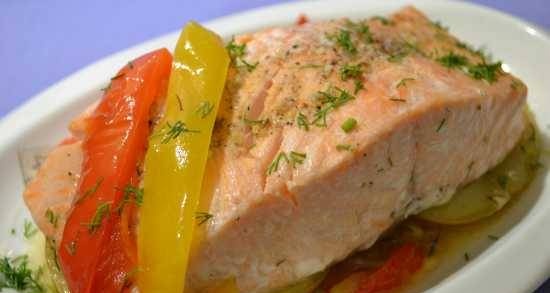Goodbye gluten!Author Elena Zheleznyak
🔗I was thinking about how much wheat we consume in the most diverse form and, frankly, I was surprised, if not horrified. These are bread and confectionery, street fast food, various pasta (at home, at school and at work), pizza, cereals: semolina, bulgur, artek, just a wheat cut, couscous. A huge percentage of sweets are made precisely with the participation of wheat flour, in breading and batter, too, it is in store food - similarly, it is found everywhere and everywhere. The traditional cuisine of many nations is based on wheat and wheat products. Isn't it harmful to consume so much wheat? I now understand that the problem of hunger in any country is solved as soon as there is enough wheat, because it is a transforming cereal that can take any shape and is able to feed millions. Wheat is so versatile and convenient that it is difficult to think of something with which it could compete in terms of consumption, it occupies, perhaps, the most significant place in the diet of a modern person.
However, what to do if you suddenly get gluten intolerance - celiac disease? A person with a gluten intolerance is forced to abruptly limit their diet, twist, invent, replace, and given how much wheat has penetrated into everyday life, this is not an easy task. By the way, the problem here is even wider, because gluten is also found in other cereals, so barley (pearl barley), rye and oats are also banned. It turns out that from what is "possible" (I take into account only cereals and cereals), there remain: rice, buckwheat, millet, legumes and corn. Not a rich list, considering that sometimes I would like bread on the table, and a birthday cake, and pizza, and pasta, and in general, the same variety as ordinary people who do not know what celiac disease is. It seems to me that you can think of something with confectionery, there are a lot of gluten-free baked goods: nut and poppy cakes, cookies, waffles, etc. , soy and chickpea flour, they also have a completely neutral and pleasant taste. Wheat flour is difficult to replace only where the properties of wheat gluten are essential and irreplaceable - in bread. Of course, many are accustomed to do without bread for various reasons, someone refused for ideological reasons, someone for health reasons, but, I know from myself, there are those who are not sweet without a piece of bread.
I once wrote that I had a short period when we assumed that our youngest daughter Masha was allergic to gluten, then I stopped using wheat. A large percentage of allergies and diseases associated with gluten intolerance develop precisely in infancy, during the first year of a child's life. In both children and adults, this may not necessarily be expressed by disorders in the digestive tract, the manifestations of gluten intolerance are very diverse: this is anemia, and weight loss, and dystrophy, and sudden fractures, and delayed mental and sexual development and even infertility.
Greatly frightened, I began to replace wheat wherever possible. It turned out that it was not so difficult and, in general, everything worked out. For example, you can use starch in béchamel sauce, corn flour in breading, instead of wheat flour pizza dough, use a mixture of rice and corn.I immediately found several recipes for gluten-free cottage cheese casseroles, cookies, cakes, etc., but the bread was really hard. I really wanted to wake up in the morning, make tea and spread a slice of bread with a thin layer of butter, life without this changed significantly, its quality dropped sharply, it was impossible to grow Zen and spit on a sandwich with butter.
Yes, I have no strength to drive.Gluten-free bread, of course, was not sold anywhere, bread and all kinds of crunchy nonsense contained wheat, rye and barley, at guests and even at home, ordinary wheat or rye bread was served, which is impossible. I tried to bake cornbread at home, on a baking powder, this, I must say, is another pleasure. Without eggs, it turns out awkward, unbaked filth, which even pigeons don't eat, with eggs it's nothing, delicious. Without oil, corn bread instantly stale, so fragile and brittle, begins to crumble and crumble. Through trial and error, I have learned a few rules of good cornbread. To make a tasty bread, you need to guess with the ratio of flour and water, the dough for it should be almost liquid, then the bread will be soft and less crumbling. The most successful I got was a bread in which there was 450 gr. milk for 300 gr. flour, and I brewed the flour, mixed it with milk and brought it to a boil, so I added eggs, butter and baking powder to the cooled mass.

The bread is delicious, but the presence of eggs in the dough and a large amount of butter is still confusing. Bread is not a cake, after all, every time instead of bread to eat a piece of high-calorie corn cake is also not very good. After a while, I came across two cans of Sekowa Buckenzyme, one for wheat bread and the other for gluten-free bread. I have already figured out the bacterial enzyme for wheat bread, this is a wonderful leaven, some delight. I have just started with the second can. The composition of both concentrates is almost identical, it includes the following bio-components: pea and corn flour, flower honey, and wheat bran in the concentrate for wheat bread. Both of them can ferment almost anything: flour from any cereal, any varieties and types, even from nuts and roots. Moreover, the reconstituted gluten-free bacterial enzyme, as well as the "gluten" one, can be stored in the refrigerator for at least four months without damage or additional feeding. The first thing I decided to do was go back to my familiar cornbread and try to bake a hitherto unknown option - fermented cornbread.
For a start, it's over, you need to restore the bacterial enzyme and remove the corn starter. The scheme of actions is practically the same as with the previous concentrate - it is removed in two stages, within one day, in a warmth, the temperature of which is as close as possible to 30 degrees. I shot it step by step so that it was clear to myself and to those who would be interested and needed.
There was no cornmeal at home, the day before it died a heroic death in fierce battles with moths, so I ground the most ordinary cornmeal in my wonderful Hawos Queen1 mill.

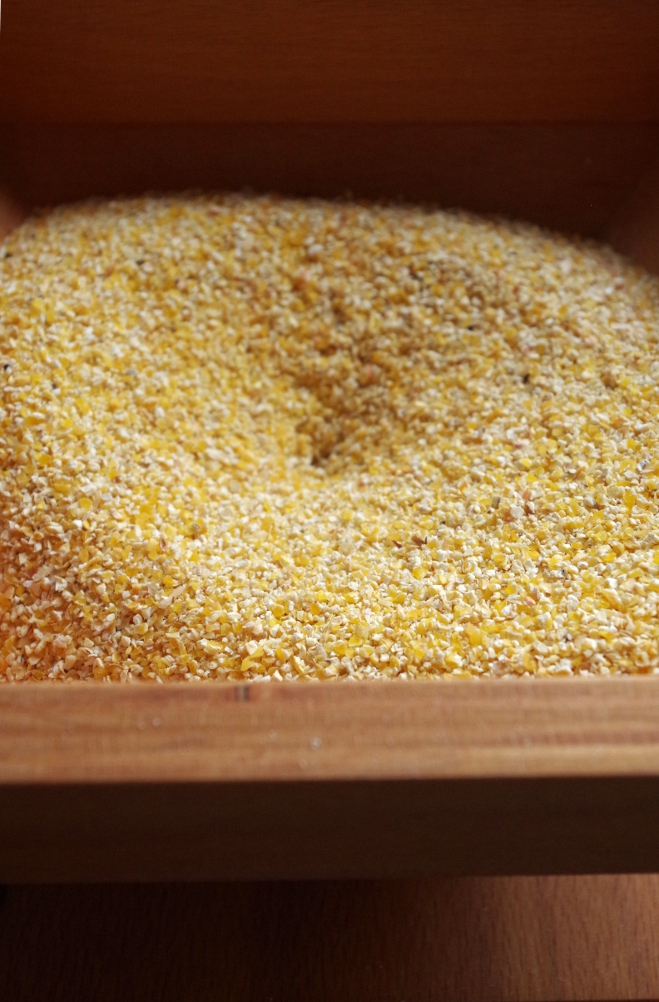
Corn flour is ground differently from wheat flour and behaves differently. I ground at the finest grinding, the flour literally jumped out of the mill in lumps, instead of pouring freely, as it was with wheat, and after grinding it was quite hot.
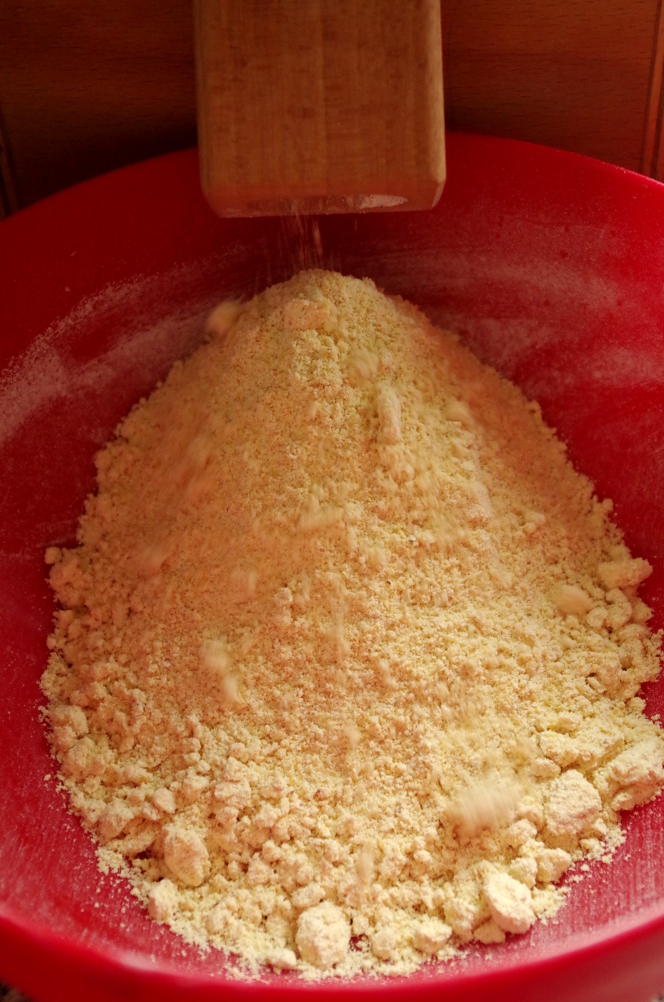
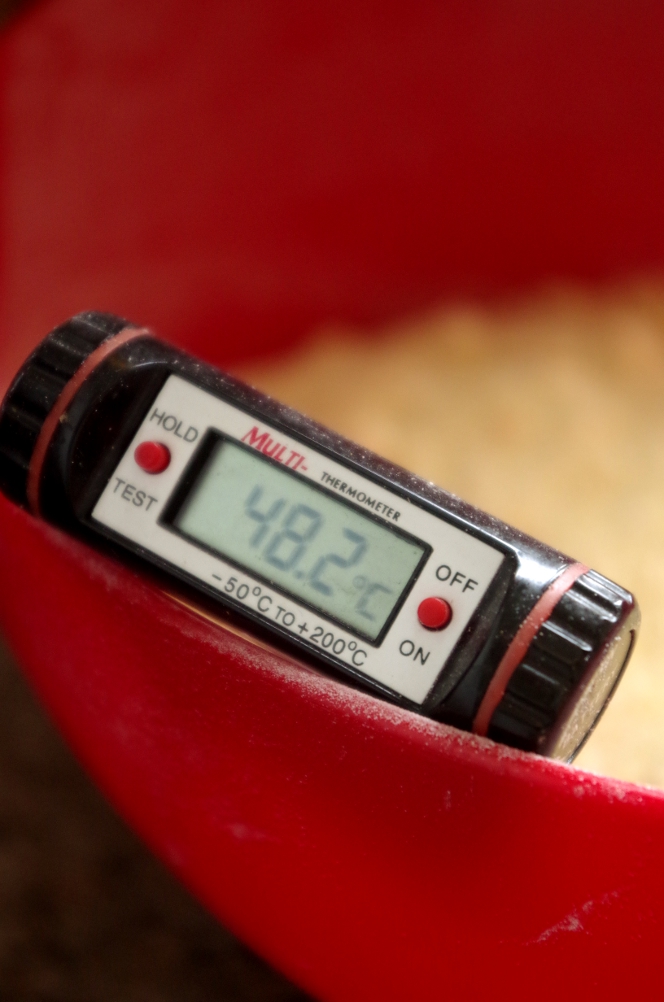
Once again I rejoiced that now I can get any flour with the help of a home mill in a matter of minutes, and for people who are allergic to gluten, a home mill is a godsend! Within one to two minutes, you can grind about a kilogram of rice, pea, chickpea, buckwheat and any other flour, and bake from it bread, flat cakes or something sweet and tasty for children.
So, here it is, a jar of gluten-free bacterial enzyme, it has the mark “Glutenfree” on it, it looks a little different from the previous one, the color is warmer, yellower, and the consistency is not granules, but powder.
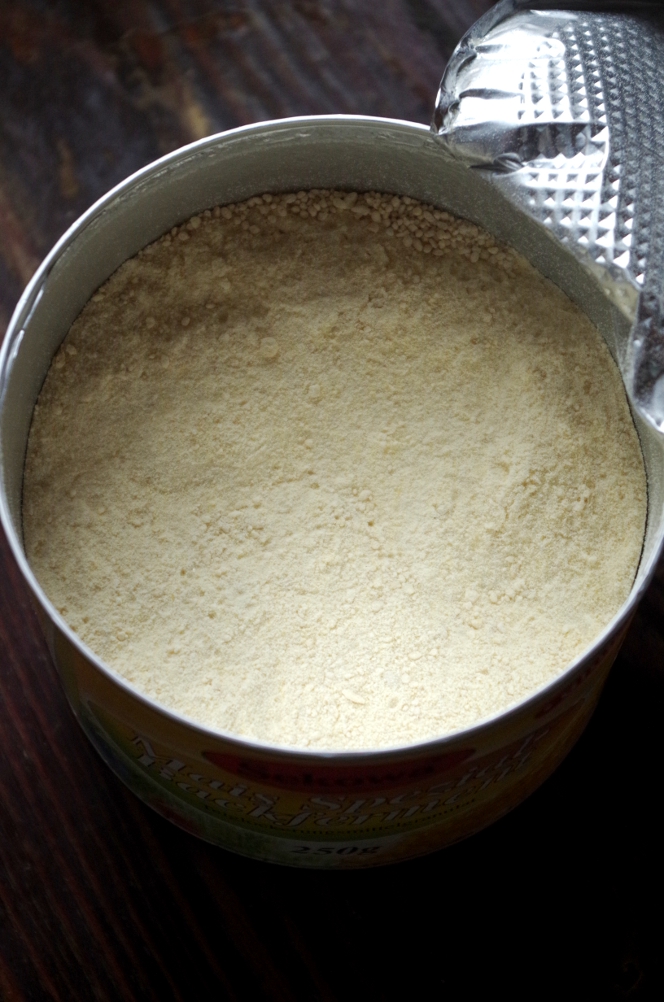 First step
First step, we take:
10 gr. dry concentrate Sekova
100 g corn flour
100 gwarm water (temperature 40 degrees).
Dissolve dry concentrate in warm water, add corn flour, mix.
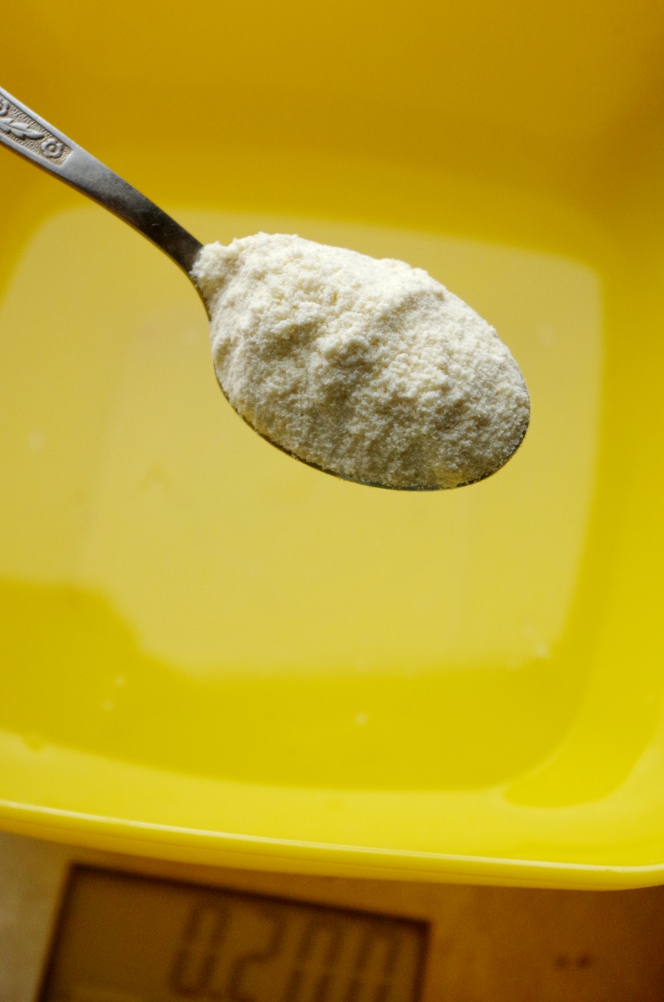

You should get such a dough, quite thick, like wet sand.
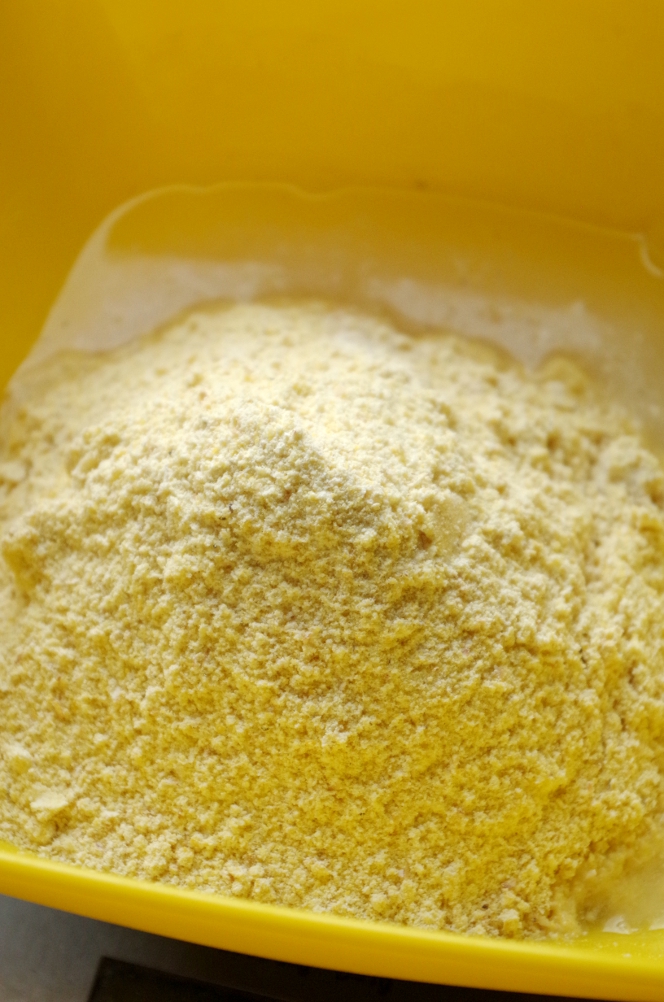

I put the dough into a jar, Masha actively helped me with this.
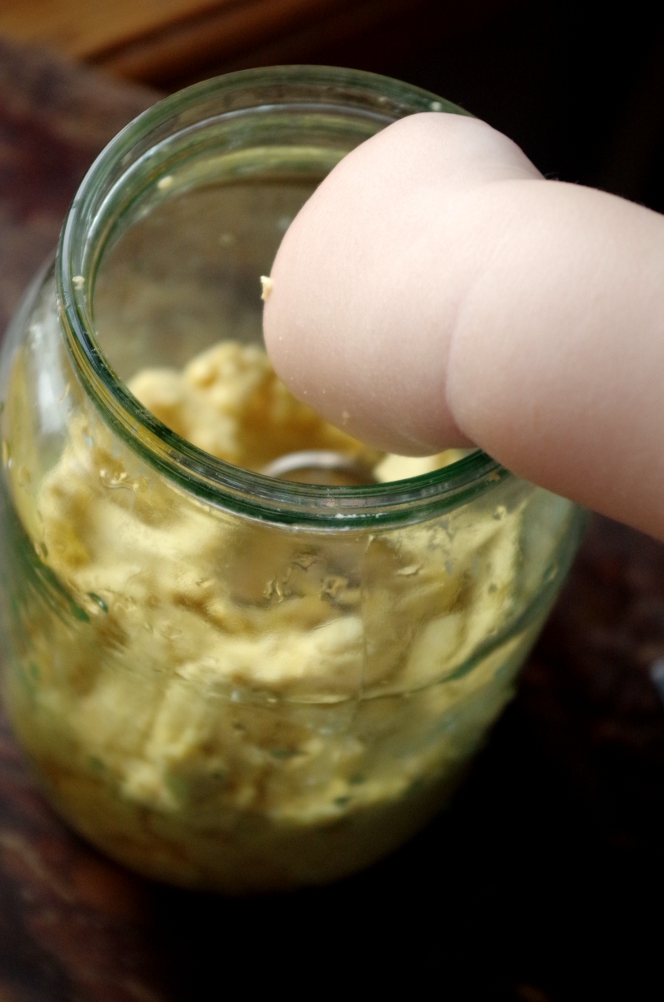
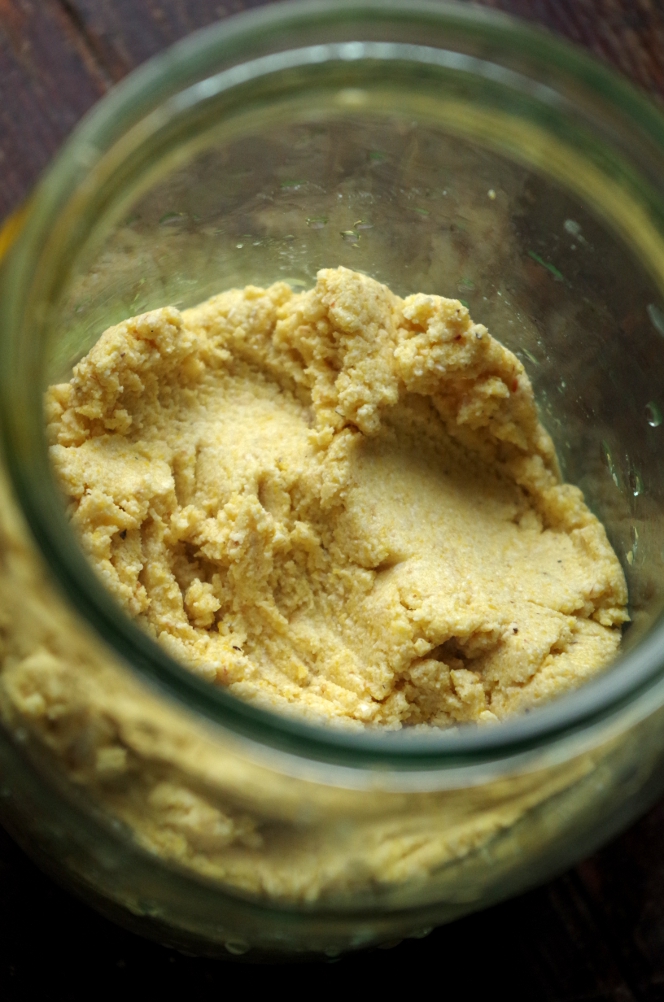
Now it needs to be left warm for 15 hours. I put it in the oven with the light on.
15 hours later, in the middle of the night, the contents of the jar looked like this. Previously, it was tamped quite tightly, in the photo it is noticeable that now it has become loose. Here is a photo it was-became for clarity
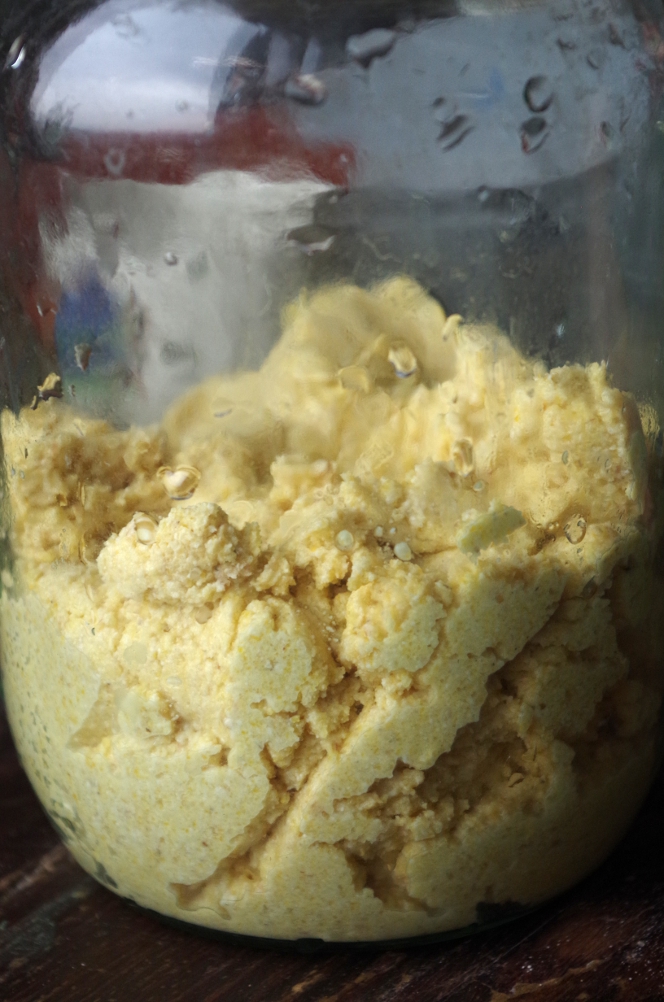
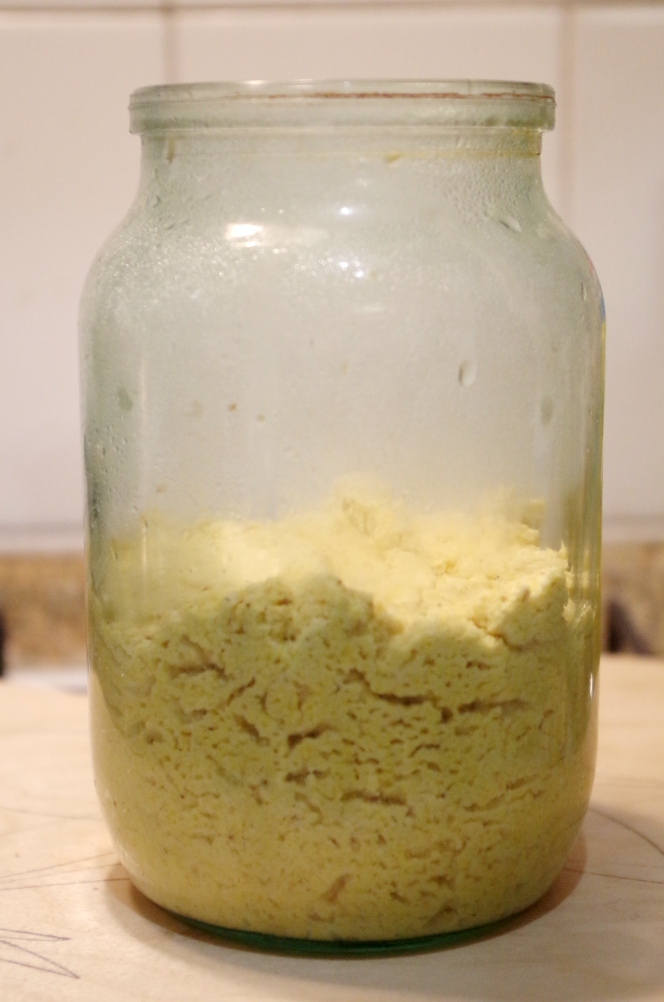
Opening the lid, I felt a very sharp, pungent alcoholic smell, the dough tasted noticeably sour.
Second phase:We take all the previous mass, add
200 gr. warm water
300 gr. corn flour.
Pour warm (40 degrees) water and dough from the first stage into a large bowl or gastro container. By the way, the dough of the first stage of fermentation looked so loose and airy. As soon as it got into the water, it was instantly moistened and dispersed in many small grains.


Stir the first stage dough completely in water, add corn flour and mix well. The dough of the second stage should be thick and thick.
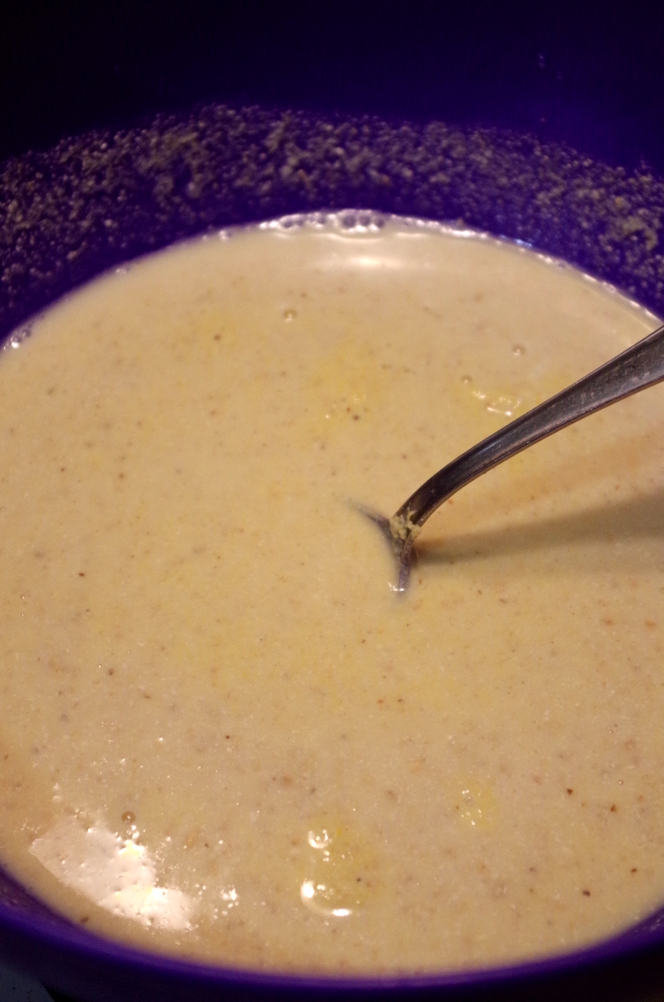
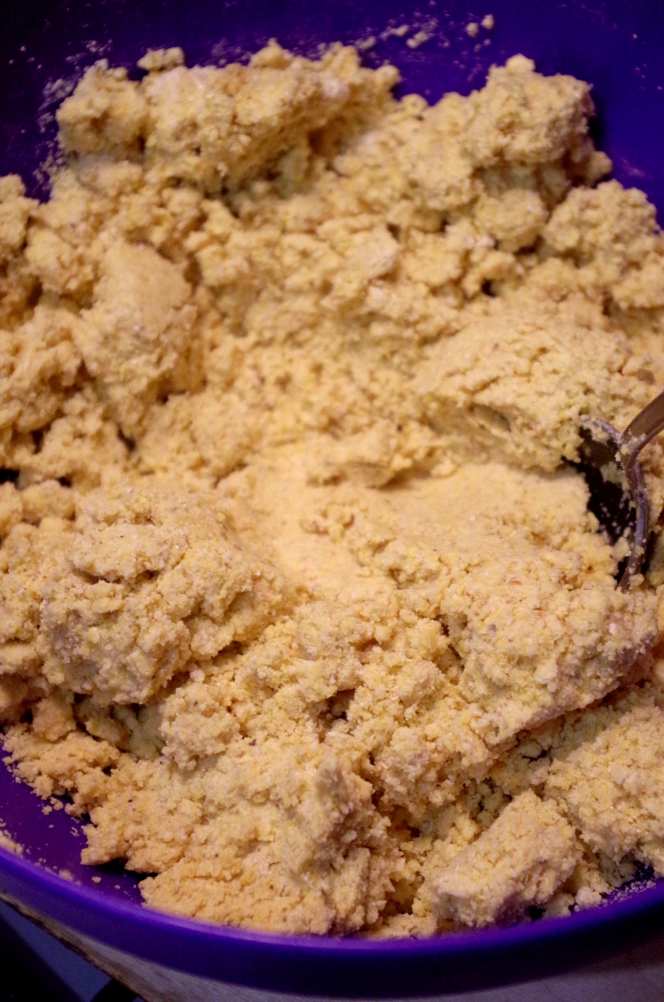
After mixing, lightly tamp, and leave for 5-8 hours warm. I left it overnight, in the morning the starter slightly increased in volume and became loose inside.
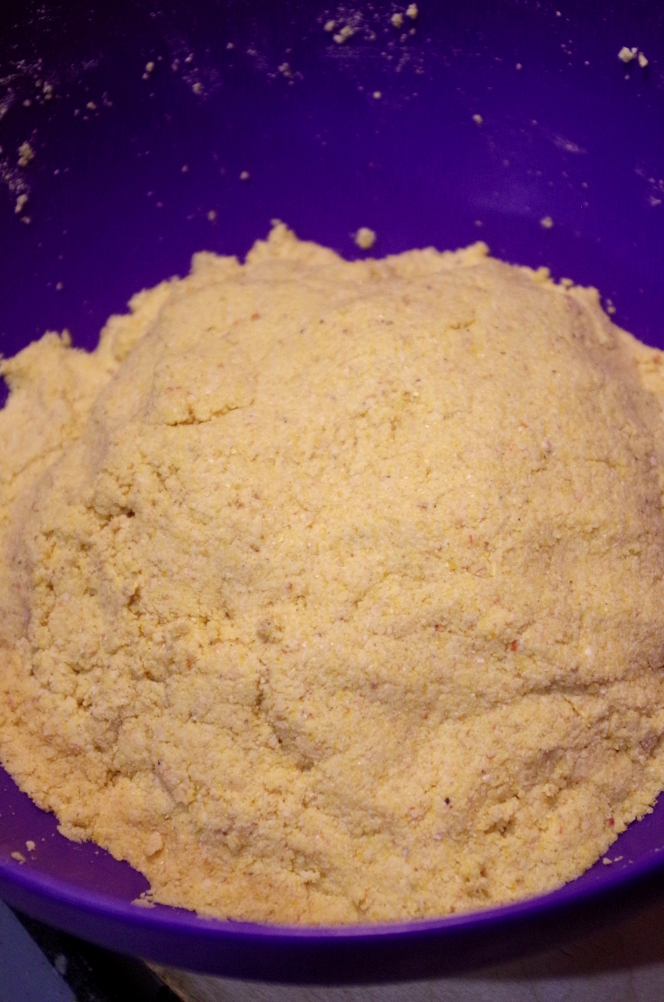

Foolishly, I recovered the bacterial enzyme in the volumes indicated in the instructions, but this is quite a lot, especially in the case when, nevertheless, the family often bakes ordinary bread from wheat flour. I put it in two jars: a liter and a half-liter, and hid it in the refrigerator. The photo shows that the inside of the dough is not quite loose, although it is heavy.
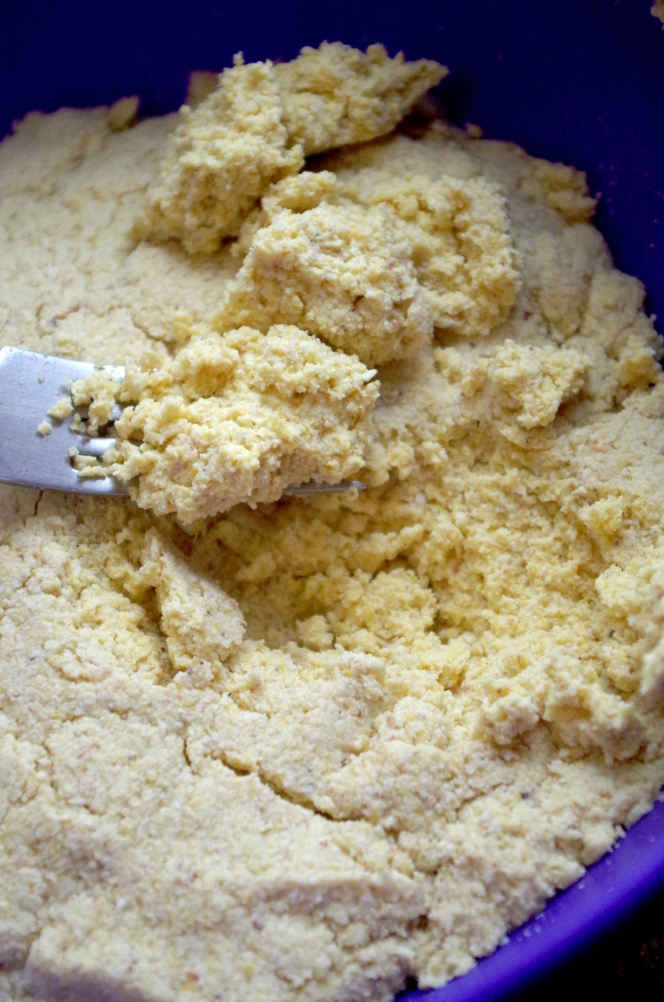
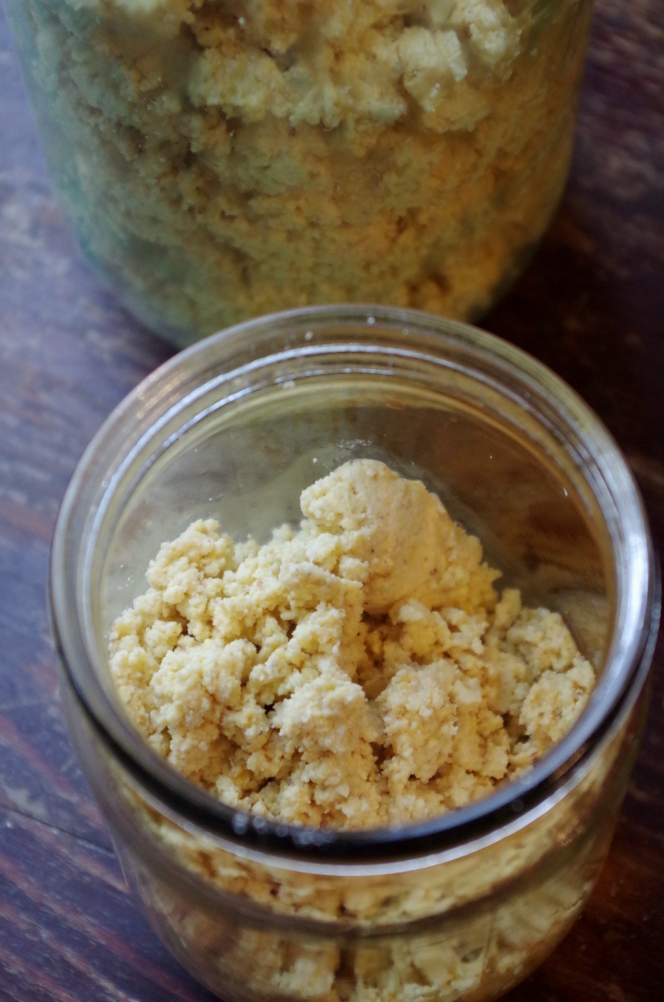
I do not yet know what to do next - to put a production dough or use a starter directly. I found a file with recipes from Sekov, there is also cornbread, so I'll try it. I can preliminarily say that the dough for gluten-free bread on the bacon enzyme is prepared in three stages, dry granules are added to the dough. It seems to me that it will be possible to simplify here and play with the production dough, and also use this corn starter for bread made from other gluten-free flours.
